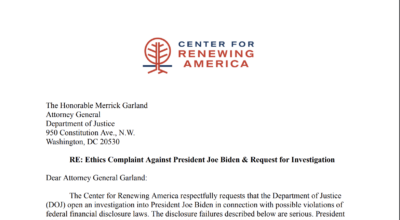
Critical Race Theory Claims and Responses
The memo from the Left has gone out!
Practitioners of “woke” orthodoxy are trying to keep Critical Race Theory (CRT) in K-12 public schools by dismissing opposition to it as a contrived “moral panic” rooted in either ignorance or subconscious white supremacy. They cannot defend CRT on substance, so instead their goal is to try to shame, intimidate, and dismiss concerned parents and citizens who dare to speak up. In the below Claim & Response, we will examine the arguments made by CRT proponents and outline the best responses to equip parents to take on this radical ideology.
Let’s be clear: CRT is absolutely being implemented in our school systems and its use is widespread. In this interview, two of the co-founders of CRT, Richard Delgado and Jean Stefancic, discuss how CRT got into education and how proud they are of that fact. In fact, Richard Delgado remarked, “Seeing critical race theory take off in education has been a source of great satisfaction for the two of us. Critical race theory is in some ways livelier in education right now than it is in law, where it is a mature movement that has settled down by comparison.”
It is also important to know that CRT is just one of several “critical theories” about the world that comes from an extreme liberal political perspective. Critical pedagogy, for example, is a method of teaching that claims political action is fundamental to all learning happening in the classroom, including math, science, and literacy. This view purports that a teacher should bring a very specific form of “woke” politics into teaching, and that teaching as a profession should be political. This essay provides a detailed explanation of how critical pedagogy became a mainstay in education.
Below are the claims that CRT defenders often make and use.
#1: Claim: CRT is only taught in law schools.
Response: CRT began in the 1980s as an approach to law. Kimberle Crenshaw, Jean Stefancic, Mari Matsuda, and others were inspired by professor Derrick Bell to begin to study the law through the lens of race. While the vision, ideas, and tenets of CRT were created in law schools and universities, those ideas have filtered down to the average person through the work of people who were not directly involved in the formation of CRT, but who have been exposed to its worldview and adopted it into their professions. In the same way that the average Christian hasn’t read all 7,000 pages of theology in Thomas Aquinas’ ‘Summa Theologica’ or the 1,100 pages of Calvin’s Institutes, many CRT activists do not spend their days reading academic law papers. This does nothing to change the fact that the ideas that originate from CRT are inundated in school systems, as can be seen by the number of textbooks about Critical Race Theory in education. This is one of the reasons one of the co-founders of CRT, Richard Delgado, said that CRT “is in some way more lively in education than it is in law.” It’s not just in law schools, it’s also very clearly pervasive in K-12 education.
#2: Claim: You don’t understand CRT.
Response: This particular claim seeks to sow doubt in those who are rightly alarmed at the Marxist roots and radical ideology of CRT. The way that this claim often proceeds is to ask detailed questions about obscure academic debates or people in CRT and then dismiss an individual and their argument if a detailed answer to any obscure or vague area of CRT cannot be satisfactorily provided.
The goal is to immediately assert that critics of CRT are not qualified to even discuss it or raise concerns about the divisive practices and materials of CRT that their children may be exposed to in the classrooms. However, one does not need to be a mechanic or fully understand how a combustion engine operates to know there is a problem when the car won’t start.
The way around this argument is twofold: The first is to point out various facts about CRT that are mentioned in the primer, and the second is to simply point out that if the CRT defender is unwilling or unable to make their argument clear then they have no business bringing it into the classroom.
If CRT proponents must retreat to the alleged complexity of theory, and they cannot plainly explain their position to parents, it should not be taught in our schools. Period.
Opponents of CRT have a duty to be conversant about CRT and key terms associated with CRT, but one does not need a Ph.D. in CRT to plainly see what is happening in your schools and to take action to oppose it.
Another strategy used within this claim is to use jargon as a smokescreen. This is where someone uses excessive amounts of technical wording to make themselves appear intelligent, while at the same time burying their argument under jargon so that what they say goes unchallenged. The goal is to make the person using jargon look like an expert and anyone who doesn’t follow appear ignorant.
This might look like a defender of CRT saying, “The ordinary nature of racism means systemic racism has structured society such that the only way to explain the lack of progress is through interest convergence theory. As such, if we want change we must problematize traditional legal theories and follow Mari Matsuda’s 1987 Paper and ‘look to the bottom.’ In this way we can engage our positionality and allow people who speak with the unique voice of color to educate us.”
This paragraph is an example of what some CRT activists will use in an attempt to silence opponents. When this happens, the response is simple: demand the CRT defenders give a clear explanation of their views. If CRT defenders claim it is not their job to educate concerned parents and citizens, then the immediate response is, “Well, I refuse to allow you to teach anything to my child that you can’t explain in clear language to an adult.”
Sidestep the technical smoke screen argument and state that none of what they said explains why it is acceptable to racially discriminate against children, or teach children to judge the worth of others based on their race and ethnicity. Force them onto the battlefield of your choosing.
#3: Claim: CRT is not “TAUGHT” in class.
Response: This tactic is similar to the first claim we addressed in this document (There is no CRT in K-12), but involves sleight of hand using the word “taught.” The purpose is to utilize a technicality to try to sneak CRT past people.
Critical Race Theory is composed of both “theory,” the tenets, beliefs, and ideas that make up CRT; and “praxis” the activism that is done with that theory in mind. When proponents say CRT is not “taught” in class, what they mean is that the teachers are not reading academic CRT legal texts to children.
However, no one is claiming that university-level CRT texts are being read in class. We are claiming that educators who are adherents to CRT will be engaging in CRT praxis by infusing the ideas and concepts of CRT, even if it is in a very simplified form, into the school or classroom environment. This strategy is specifically advocated by many critical race theorists, who take delight in seeing their work infused into primary education. Some teachers and educators are now overtly advocating for and demanding CRT in their lesson plans and curriculum guidelines as seen in the recent adoption of a resolution by the National Education Association to promote CRT in the classroom in all 50 states.
#4: Claim: CRT doesn’t teach that white people are inherently racist.
Response: A core tenet of CRT holds that society is systemically racist, built on a set of assumptions claiming that “whiteness” (the ideas, beliefs, thoughts, and ideologies allegedly associated with white culture) is superior to “blackness” (the ideas, beliefs, thoughts, and ideologies allegedly associated with black culture). As a result, CRT theorists claim our society’s institutions and culture are filled with messages and ideas that program Americans to believe that “whiteness” is better than “blackness.”
For this reason, CRT proponents argue that white people are socialized into an inherently racist worldview and that the whole of society is filled with racist ideas that white people absorb and then express through “unconscious bias.” CRT does not apply this idea to non-white people because non-white people are allegedly subjected to racism and have developed an ability to “see” it. CRT argues that white people never experience racism so they do not know what to look for, and for that reason, they cannot see racism flowing through society.
Their thinking on this issue is stated clearly by Robin DiAngelo: “It is not possible to avoid being socialized into a racist worldview if you’re white.”
#5: Claim: That isn’t what that word means!
Response: Sometimes activists and CRT defenders will nitpick at the various meanings of words. They will insist that critics use each and every word in the precisely prescribed way, and will denounce even the slightest deviation from the approved jargon. This is a very similar tactic to the previously addressed issue about proponents of CRT hiding behind a litany of highly technical arguments.
The defense for this is likewise similar: As the teacher or CRT proponent, it is their job to demonstrate to the parent that their ideas ought to be taught in class. Parents have no obligation to permit them to teach their ideas if they insist on playing word games and are unwilling to make their ideas and positions plain and clear.
Often, what proponents claim as the definitions of terms and concepts isn’t always the case. The “woke” crowd will routinely redefine word meanings if they determine that a current definition leaves them open to attack, hence why Dr. Kendi stated that CRT is foundational to his work, and then two weeks later backtracked by claiming his work has nothing to do with CRT.
When in doubt, go back to basics: let academics and self-appointed experts argue over the meaning of words. The focus must be on making CRT proponents explain why they oppose the removal of the specific ideas outlined in section 2B of this model legislation.
“B. Therefore, no school district, or public school, including a public charter school, shall direct or otherwise compel students to personally affirm, adopt, or adhere to any of the following tenets:
- 1. That any sex, race, ethnicity, color, or national origin is inherently superior or inferior;
- 2. That individuals should be discriminated against or receive adverse treatment solely or partly because of the sex, race, ethnicity, religion, color, or national origin attributed to them;
- 3. That an individual, by virtue of the sex, race, ethnicity, religion, color, or national origin attributed to them, are inherently responsible for actions committed in the past by other members of the same (or any other) sex, race, ethnicity, religion, color, or national origin;
- 4. That an individual, by virtue of the sex, race, ethnicity, religion, color, or national origin attributed to them is inherently racist, sexist, or oppressive, whether consciously or unconsciously;
- 5. That an individual’s moral character is necessarily determined by the sex, race, ethnicity, religion, color, or national origin attributed to them;
- 6. That an individual should be targeted and made to feel discomfort, guilt, anguish, or any other form of psychological, physical, or any other kind(s) of distress due to the sex, race, ethnicity, religion, color, or national origin attributed to them;
- 7. That meritocracy or traits such as a hard work ethic are racist or sexist, or were created by a particular race to oppress another race; or
- 8. That the United States is fundamentally or systemically racist or sexist;”
#6: Claim: We are just teaching history.
Response: This is arguably the most dishonest tactic. While it is fair to note that CRT does take a look at history, it does so through a particular lens with an already pre-approved narrative that must be supported. The claim that CRT is merely the teaching of history is to ignore the dubious and often inaccurate manner in which CRT does so.
When proponents say they are merely teaching history, they fail to mention which lessons they draw from that history and the uses to which that history is being put. As such, a good response is to say that history can be taught fully, clearly, and critically without adopting CRT’s myopic prism. Slavery, Jim Crow, Japanese Internment, racism, sexism, and more can be and have been honestly and accurately addressed and discussed in K-12 curricula long before the frameworks of CRT were pushed into the classroom. Randi Weingarten, head of a major teacher’s unions, has said she will fight to keep CRT in classrooms to teach “honest history.” There were historians for thousands of years teaching and discussing history before CRT was created in the 1980s. We do not need CRT to teach honest history.
Another important consideration is that it is also not just a debate about teaching history from differing viewpoints, given that many supporters of CRT may respond that opposition is simply because CRT detractors prefer their viewpoint.
The truth is that we prefer history taught accurately, fairly, and through a lens affirms the American ideal that all men are created equal and endowed by their Creator with unalienable rights, even if that means acknowledging that our own nation has at times failed to live up to that high standard.
#7: Claim: CRT is a partisan boogeyman fueled by political operatives.
Response: This is an attempt to dismiss concerns as part of a partisan plan to win elections. In this interview, two of the founders of CRT discuss the multitude of ways that CRT has seeped into education. The Center for Renewing America also has a number of resources showing exactly what CRT theorists think and how CRT operates. This strategy is yet another attempt to simply dismiss the issue, despite abundant and clear information that CRT is highly problematic, divisive, racist, sexist, and intentionally anti-American.
CRT is real, frameworks of it are in our schools, and CRT theorists themselves brag about such developments.
The claim that parents are rising up all across the nation for purely political reasons or as pawns of a political game, as opposed to the very real anger and outrage at what their children are being taught, is tacit admission of the anti-American radicalism of CRT. This is not a serious argument and is intended to gaslight parents into abandoning their rightful concerns.
Perhaps most importantly, however, such a claim even ignores that opposition to CRT is increasingly bipartisan in nature and is taking place in heavily liberal areas of the country as parents begin to understand how applied concepts of CRT harm all students.
#8: Claim: Concern over CRT is nothing but a moral panic.
Response: Given that CRT is clearly being brought into education, why are defenders of CRT saying this isn’t happening and the push against CRT is just a “moral panic?” The answer is that proponents know that if people see what is going on, and become aware of what CRT really says, they would throw CRT out of the K-12 curriculum without hesitation. The goal of calling opposition to CRT a moral panic is to delegitimize the concerns of parents and citizens against the practice or concepts of CRT.
The best way to fight against this tactic is to calmly and clearly explain why CRT should be opposed, and why a refusal to judge people by their race is fundamentally American and consistent with a free and moral people. The Citizens for Renewing America has produced a toolkit for fighting CRT and a primer on what CRT is and how to spot it.
#9: Claim: The teachers are experts and they should decide what kids learn.
Response: The claim here is that (and it’s usually stated as a clear fact) teachers are experts in their field, therefore it should be teachers and not parents that decide what values are taught in the classroom.
The mistake that is made here is to infer from the fact that while a teacher may be an expert at knowing how to run a classroom, maintain order in an elementary school, and explain math and science to kids, that the moral values and political disposition of the teacher are somehow superior and take priority over the values held by parents.
It is not the job of a teacher to raise children: that expertise solely falls on the shoulders of parents, guardians, and family. It is a teacher’s job to ensure kids can read, write, do math, understand historical facts, and learn how to think to prepare them for adulthood and being good citizens.
#10: Claim: Anyone opposed to CRT is racist, and opposition to CRT is because white people just don’t want change.
Response: This is a classic smear tactic. Those who oppose CRT do so because CRT is a radical, false, and immoral theory that was formed by a cynical and pessimistic view of America. CRT questions the very foundations of Western civilization including a colorblind and neutral application of the law, rationalism, and legal rights.
Further, this style of argument is circular. It assumes that CRT is correct and anyone who is against CRT must have bad motives because no well-meaning person could possibly oppose it. Therefore, any argument against CRT should be viewed as merely an excuse for ignorance and racism. That kind of thinking is called a Kafka Trap.
Put simply, a Kafka Trap is a fallacy where someone is accused of something terrible and, when the accused person insists they are innocent, the accuser twists the insistence of innocence and uses it as evidence of guilt. Here is a simple illustration of the tactic:
Police: “You robbed the bank.”
You: “I did not.”
Police: “That is exactly what a bank robber would say. I knew you were guilty.”
The mechanism of a Kafka Trap works like this: Someone goes about accusing someone else of something terrible, and when the accused person insists that they are in fact innocent, the person making the accusation twists the insistence of innocence and uses it as evidence of guilt. In this way, all the accused person’s claims are treated as though they imply guilt.
In the CRT debate the argument looks like this:
Teacher: “We need CRT in schools so our children understand the evils of racism.”
Parent: “No, we do not. CRT is advocating racism.”
Teacher: “That proves you are a racist, and racist parents like you are why we need CRT in schools.”
If one agrees to have CRT in class they win. If one does not agree to have CRT in class then that person is a racist, which means CRT is needed in class to protect the student from “racist thinking” they are receiving at home. There is no way out as they have baked their conclusion into the argument.
It is the logical equivalent of “heads I win, tails you lose.”
After exposing the fallacy of this logic, get back to basics and make sure that specific concepts are pointed out that need to be removed from the classroom such as teaching children that one race is inherently superior to another. Force the proponents of CRT into a rhetorical corner and demand that they explain their opposition to banning the usage of racial discrimination in curriculum.
#11: Claim: Teachers have a First Amendment right to teach whatever they want in K-12 public school classrooms.
Response: This is false. School boards have a duty to regulate classroom instruction and decide what the content of the curriculum will be. School Boards absolutely have the right to determine what is in the curriculum, and what is left out. Further, according to the Foundation for Individual Rights in Education:
“You have different speech rights as a hired employee than you do as a private citizen. You are generally considered to speak for the school district when you are in your classroom. “Speech” extends to classroom decorations, signs, posters, and statement clothing (such as pins or buttons.) According to the ruling in Garcetti v. Ceballos (2006), K-12 teachers’ speech is regarded as the expression of a public employee pursuant to official duties. Hence, “curricular” speech is regarded as “hired speech,” not entitled to protection by the First Amendment.”
Under those circumstances, teachers are not speaking as citizens for First Amendment purposes, and the Constitution does not insulate their communications from employer discipline.
Teachers absolutely do not have a First Amendment right to teach whatever they want in their classroom.




